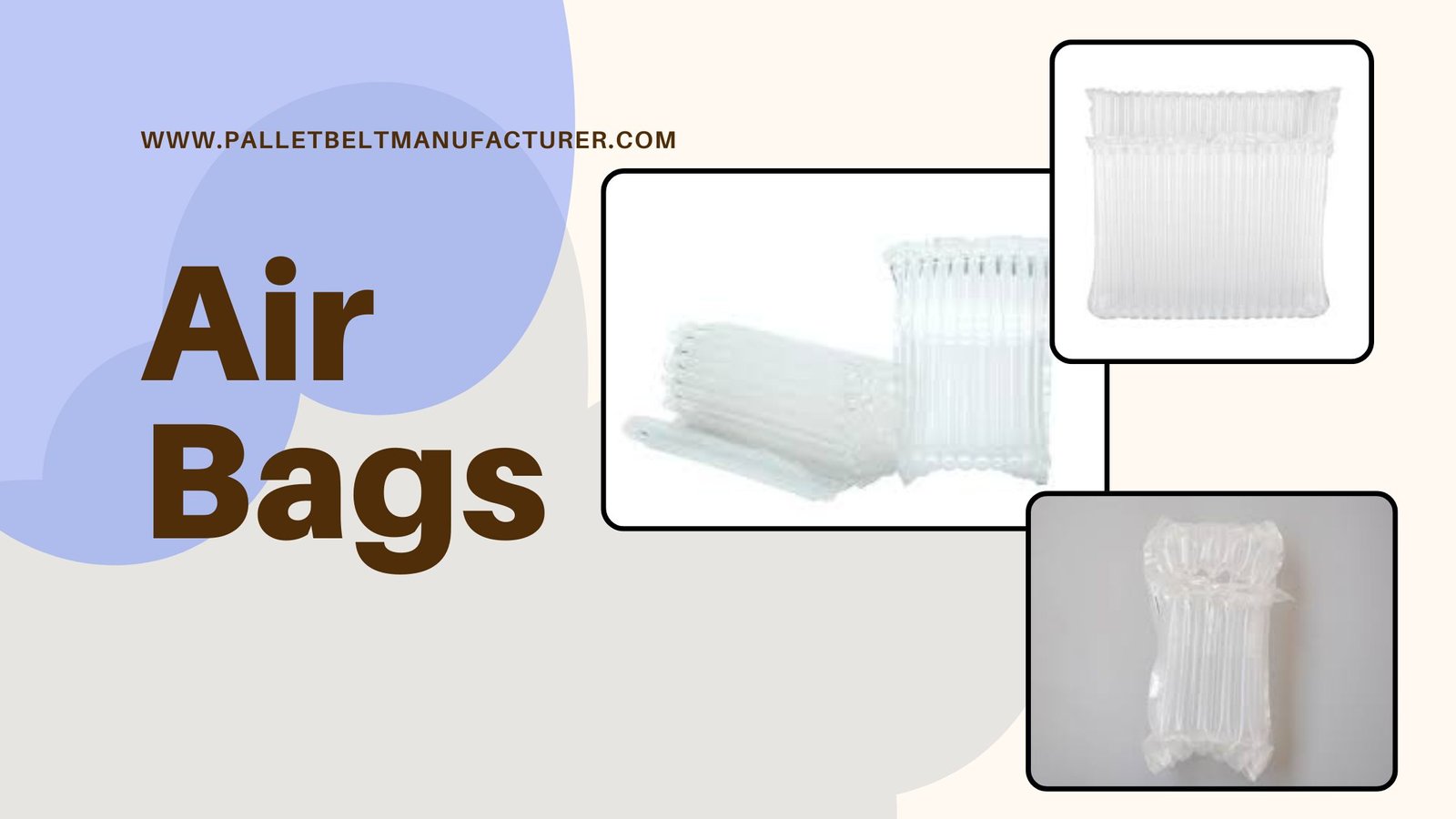
Air Bags for Cargo Safety: The Unsung Hero of Safe Shipping
In the high-speed world of logistics, where goods travel thousands of miles by road, rail, sea, or air, protecting cargo from damage is crucial. Enter the air bag—not the kind that deploys in your car, but the industrial dunnage air bags that are quietly revolutionizing the way we secure cargo during transit.
If you’re in the business of logistics, exports, or freight forwarding, understanding how air bags (dunnage bags) work and why they’re a game-changer can save you time, money, and damaged goods.
What Are Air Bags (Dunnage Bags)?
Dunnage air bags are inflatable packaging tools designed to secure and stabilize cargo in transit. Placed in the voids between goods, these air-filled cushions absorb impact, prevent shifting, and minimize damage.
Made from high-strength polyethylene (PE), woven polypropylene (PP), or kraft paper, air bags are reusable, recyclable, and easy to use—requiring only a simple air pump.
Why Air Bags Are Crucial in Logistics
Every time a truck hits a pothole or a shipping container sways in heavy seas, cargo is at risk. Traditional methods like wooden blocks or foam padding are costly, less sustainable, and labor-intensive. Air bags offer a smart alternative:
- Quick installation
- Eco-friendly material
- Lightweight, yet strong
- Reusable multiple times
- Fits irregular gaps easily
Whether it’s electronics, furniture, automotive parts, or FMCG goods, air bags prevent product loss and maintain cargo integrity, reducing claims and returns.
Applications of Dunnage Air Bags
Air bags are commonly used in:
- Shipping containers
- Trucks and trailers
- Rail cargo
- Palletized loads
- Warehouse storage
They work well across various industries:
- Logistics and Freight
- E-commerce and Retail
- Automotive and Machinery
- Electronics and Appliances
- FMCG and Packaging
Types of Air Bags
1. Paper Dunnage Bags
- Made with kraft paper and PE inner liner.
- Ideal for medium-duty use.
- Biodegradable and cost-effective.
2. Woven Polypropylene (PP) Air Bags
- Heavy-duty bags suitable for high-pressure and large cargo gaps.
- Waterproof and reusable.
3. Polyethylene (PE) Air Bags
- Durable and versatile.
- Common in food and pharma logistics.
How to Use Dunnage Air Bags
Using dunnage bags is simple:
- Identify voids between cargo in the container or truck.
- Insert the deflated air bag in the gap.
- Inflate using an air pump or compressor (within seconds).
- Check the pressure using the gauge (if available).
- Once inflated, the bag holds cargo firmly in place.
They are equally easy to deflate and remove, and many can be reused for multiple shipments.
Quality Features to Look For
When choosing air bags, consider:
- Burst pressure rating
- Valve type (fast fill, reusable)
- Layer construction (single/multi-layer)
- Moisture resistance
- Load capacity and certifications (AAR, ISO)
Are Airbags Eco-Friendly?
Yes, most dunnage air bags are 100% recyclable. Some paper-based ones are also biodegradable. Compared to wooden bracing or styrofoam, air bags significantly reduce environmental impact and packaging waste.
Benefits of Using Dunnage Air Bags
- Saves time in loading and unloading
- Reduces costs from product damage
- Eco-friendly and reusable
- Custom-fit to various cargo types
- Increases cargo security during long-haul transport
- Complies with international safety standards
Conclusion: A Small Investment with Big Impact
Air bags may seem like a small addition to your packaging strategy, but their impact on cargo safety, efficiency, and sustainability is massive. Whether you’re shipping across cities or continents, using the right dunnage bags ensures that your products arrive in perfect condition.
If you’re in logistics, exports, or warehousing, now is the time to explore reliable air bag suppliers who offer certified, durable, and cost-effective solutions.
FAQs About Air Bags (Dunnage Bags)
Q1: Can dunnage bags be reused?
Yes, especially woven PP and PE bags with reusable valves. Paper bags are often single-use.
Q2: Are air bags suitable for sea shipping?
Absolutely. They’re commonly used in containers on ships to protect against movement caused by waves.
Q3: Do air bags require special tools?
Just an air pump or compressor. Some suppliers provide automatic inflators or manual tools.
Q4: How much pressure can these bags handle?
It depends on the type and grade. High-quality bags can handle several tons of force.
Q5: Are dunnage bags better than wooden bracing?
Yes, in most cases. They are lighter, quicker to use, environmentally friendly, and offer better shock absorption.

